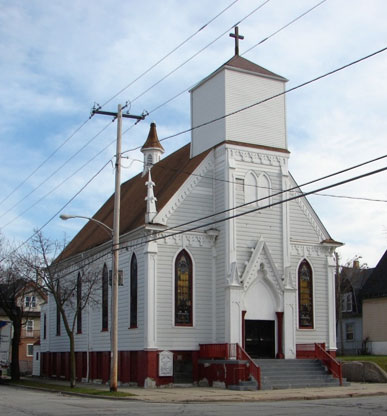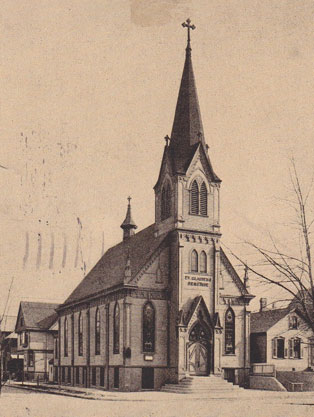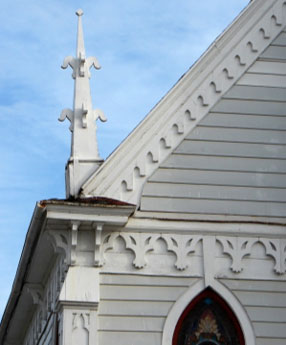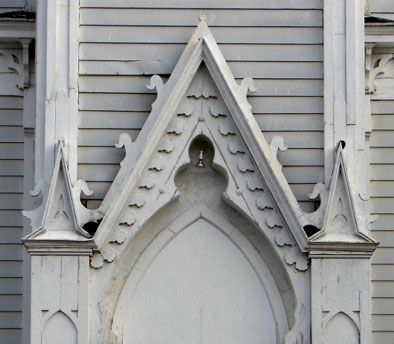36. Faith Evangelical, 1897
Now Bethel Temple Church of God in Christ
2576 North 5th Street (at Clarke Street)
Architects: Rische and Kiesslich
The Evangelical Synod of North America was organized in Missouri in 1840, adopting the name German Evangelical Synod of North America in 1877. This denomination gained member congregations among German immigrant communities throughout the Midwest, including Faith Evangelical. Originally known as Glaubens Church (the German word translates as “faith”), this church first appears in city directories in 1898, with the completion of the small building at 5th and Clarke Streets. It therefore appears that the congregation was newly formed at this time, rather than moving from an earlier location. At the time of the building’s construction, there were four other churches in Milwaukee affiliated with the German Evangelical Synod, including Trinity Evangelical just four blocks away at 4th Street and Meinecke Avenue. Faith Evangelical may have been formed by the departure of some congregants from the larger Trinity Evangelical.
City directory listings for this church change from Glaubens Evangelical to Faith Evangelical and Reformed in the early 1940s. In addition to Anglicizing the name, this reflects the merger of the German Evangelical Synod with the Reformed Church in the United States (also known as the German Reformed Church). This group later merged with the Congregational Church to form the United Church of Christ. However, the little church at 5th and Clarke did not remain with this denomination long enough to become part of the United Church of Christ. In the early 1950s, Mount Zion Assembly of the Apostolic Faith acquired the building. Mount Zion Assembly relinquished the building in the late 1970s to its current occupant, Bethel Temple, which is affiliated with the Church of God in Christ.
Faith Evangelical is a Carpenter Gothic church, a subset of the Gothic Revival in which relatively simple buildings of wood construction are given pointed-arch windows and other Gothic details such as buttresses and pinnacles. The wood ornament at the eaves consists of brackets placed flat against the wall in alternating orientations. Brackets of the same size and design project from the wall at the corners and at intervals along the eaves. These brackets and much of the other wooden ornament, colloquially referred to as “gingerbread,” would not have been produced at the construction site. Instead, it would have been purchased in quantity from the local lumber dealer, in much the same way that a dressmaker might buy a bolt of lace to add ornamental trimmings to her creations.
As shown in the historic postcard image, the central tower originally had a more ornate upper stage, topped by a fairly tall steeple for a church of such modest size. The front entrance has also been modified, and the exterior walls have been covered with aluminum siding. In spite of these changes, it is remarkable that the church retains most of its original wooden ornament after more than 100 years, including one of the two pinnacles on the façade. This church is Milwaukee’s best surviving example of the Carpenter Gothic.



